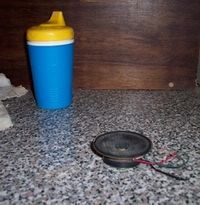I've got to get to some of my day stuff, but will try to look into this later on, if nobody else comes up with anything. There may be one or two more helpful details, but I'd have to think.
Does it screw up in all those apps you mention? They're probably not all using the same soundcard driver (or they shouldn't be). Steinberg stuff is my main thing, and I know that should ideally be set for the dedicated "MOTU PCI-324 ASIO" driver or whatever (not the generic or multimedia ASIO stuff). Also, try shutting off any of the boxes you can in that XP multimedia devices panel (map through this device,etc.). If there's an audio problem, you don't want anything trying to access the card for system use, while your program's using it. "Use audio features on this device" might completely block ASIO access to the card, but try that too after you make sure Cubase is using the right driver. There are a few other devices that may possibly smash into the 324 while it's working like that too, and you can try them 1 by 1. The network card might be one, as well as the video card (that Intel thing is an actual "card" right). Sometimes the slot you've got stuff in can be internally "hardwired" into motherboard resources that some of the other stuff needs. You can often track down documentation for your motherboard model, which may tell you which slots are shared with what, so you can put it in a more "relaxed" slot, but just swapping the card around by trial & error may get you going there. Even my PCI-424 has a slot or two that it dislikes on my machine. -- I'm also guessing you've installed in regular "ACPI" mode (The first "computer" item in the device manager should tell you).
As a last resort, there are usually some BIOS parameters and XP prefs you can mess with which may help (PCI latency, bus mastering,RAM timing,AGP speed,etc.), but I wouldn't do that yet.
www.musicxp.net usually has some good DAW tuning tips. I think there's also a section, or PDF, on the RME site for general DAW config stuff too.
Assuming the 324 panel is like mine, how much of the stuff is actually on or off in there (rather than just what's used by the app or session)? Cubase, of course, has it's own buffer prefs too. If you aren't on that 324 ASIO driver in there, that could be a prime suspect.
BTW- The noise you describe sort of sounds like things you'll get when there's a digital input configured in the MOTU prefs, but the device itself is disconnected or turned off. Interfering devices and clock mismatches will often more likely create dropped samples, brief spikes, and other occasional transient noises. Is it happening at anything that sounds like consistent intervals, and can you think of anything you could try in standalone mode, which may tell you whether or not the box itself is healthy in it's other functions? (longshot)
Don't know what part it plays, but are you up to date on DirectX (9.0c?) and your Intel chipset drivers and all? You can get a chipset update bundle easily from Intel's site. Also make sure that board's BIOS is fairly up to date.
Your host CPU is obviously plenty powerful, unless that chipset or RAM is somehow on a known blacklist, but I wouldn't guess an Intel would be in there. I'll try to get you that list too, so if you're not using a proprietary case which won't fit a standard ATX board, a board swap may not cost all that much as another last resort. I can maybe put this stuff up in that Nuendo thread too if I can't help. Again, my knowledge is pretty limited to Steinberg/ASIO stuff, but there are people in there who run a variety.
I'd start with an absolute minimum: Two input/outputs or one bank enabled everywhere, system sounds off, internal 324 clock, no MTP, default buffers (I really don't think they should need to be too high for 2 channels on the dedicated ASIO driver), and the NIC disabled in the device manager. After that, maybe try knocking down the video acceleration and some of the busmastering or enhancements for that or your IDE controller. If you can, borrow another graphics card, and shut that one down in the BIOS, if it's an onboard circuit, to see what that does.
(keep track of all this junk while you're doing it)
With that CPU and the WD drive, you should get a hell of a lot of tracks going, but start with those two tracks to get that noise out of the way first.
And last but not first, the famous "try another firewire cable" suggestion.
Alright, so much for the day stuff.
I'll check back later. Let me know here if it gets fixed.
George
Maybe André Maquera can help.gualso wrote:SORRY ABOUT MY ENGLISH, I DO SEPK SPANISH
